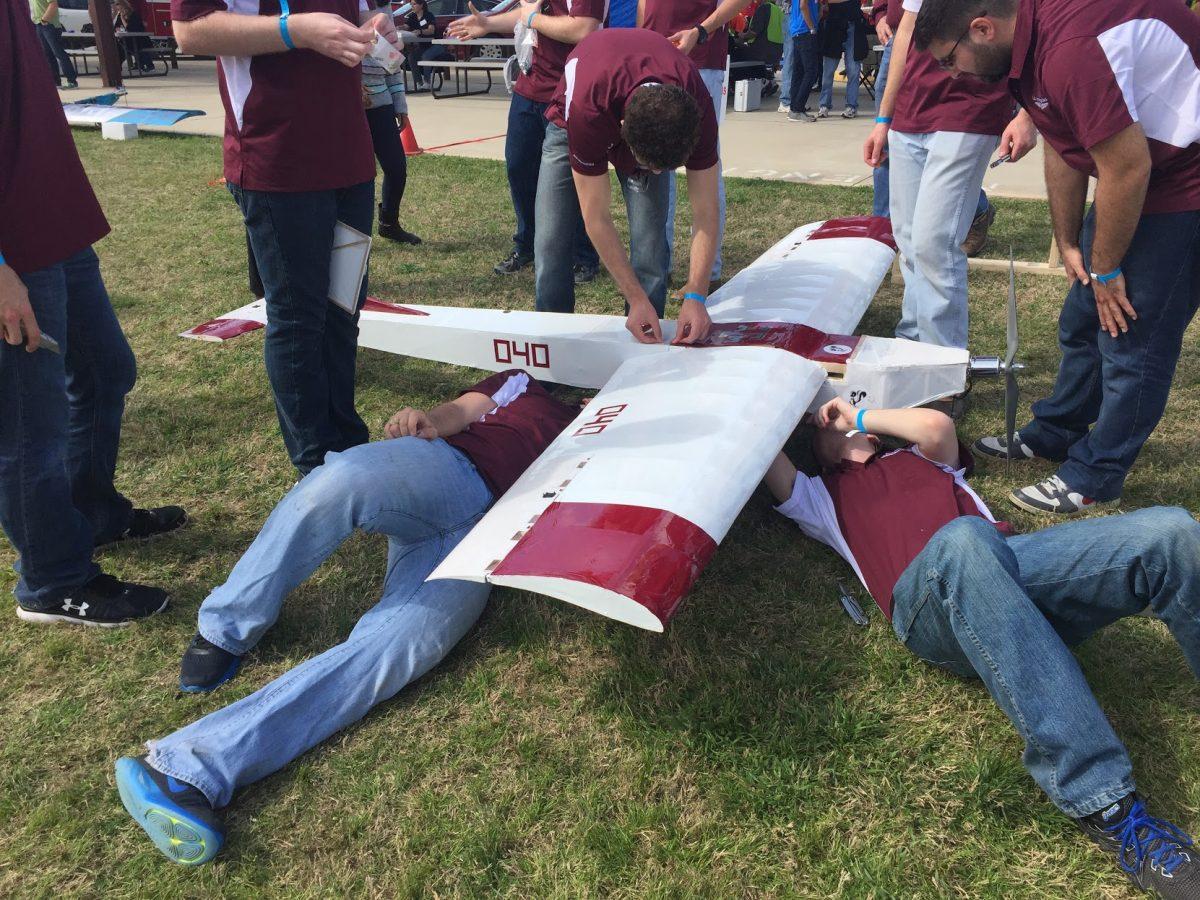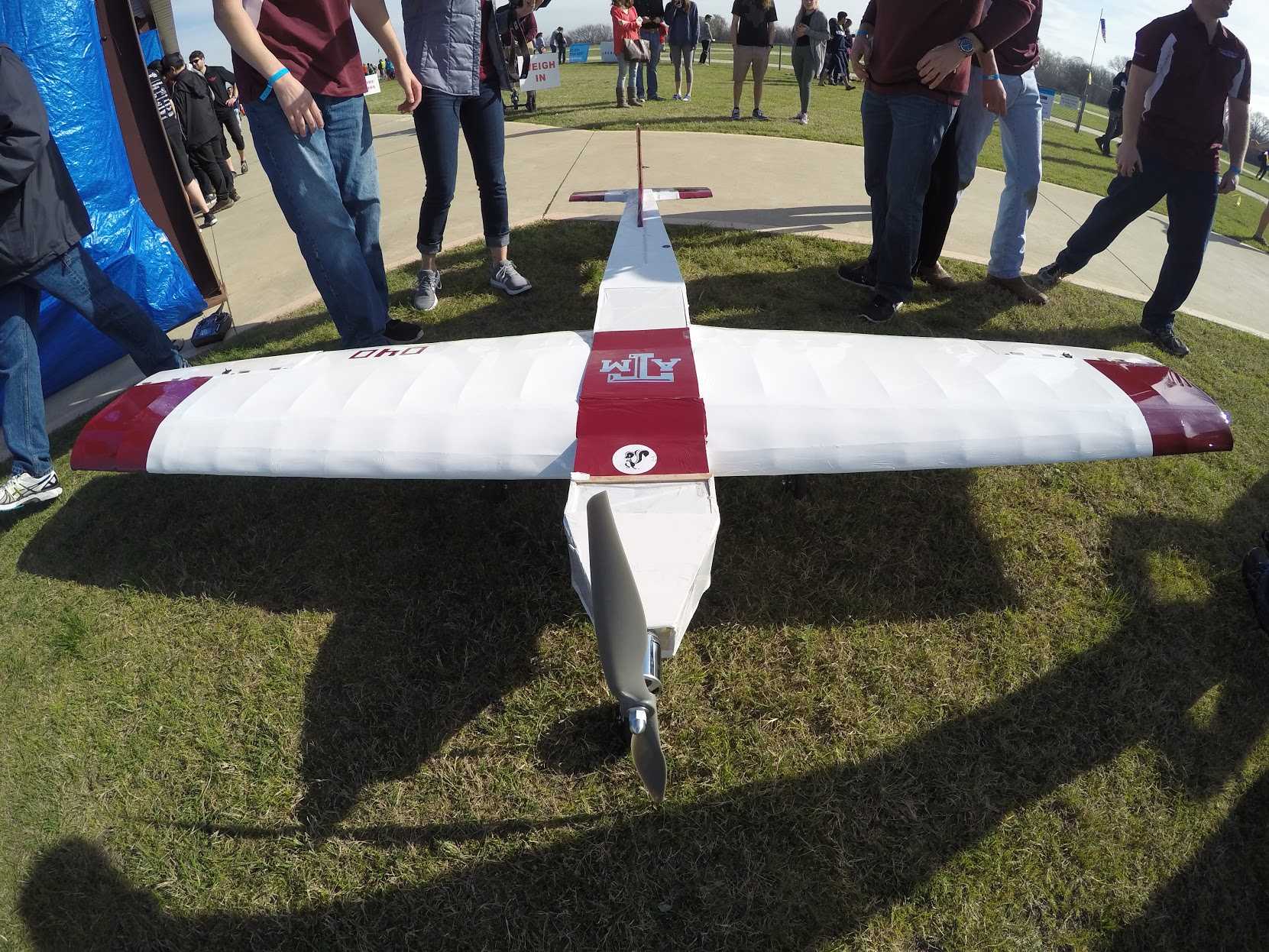While many students took last week off for spring break, a team of Aggies placed second overall at an international aero design competition in Dallas.
Each year, the Society for Automotive Engineers Aero Design team designs, builds and tests an aircraft for the SAE Aero Design series — an international competition held in Dallas. The competition challenges participants to apply classroom knowledge to build an aircraft under a set of engineering constraints. Teams compete in advanced, regular and micro divisions and are judged based on an oral presentation, written report and a flight test. Out of 71 groups — including international groups from India, Egypt and Mexico — A&M placed second overall in the regular division and third overall in the micro division.
Matthew Wescott, aerospace senior and executive director, said the design series allows students to apply their classroom knowledge to make flying come to life.
“The purpose of the competition is to really give aerospace, mechanical and even electrical engineering majors an outlet where they can apply [what] they accumulate during their undergraduate career and giving them a way to apply it and actually build all the things they learn about in class or their labs and get to see it fly,” Wescott said. “The real the motivating factor is getting to compete against other tier one schools, not just nationally but internationally.”
Cullen Eckert, aerospace senior and chief engineer, said the regular division team’s goal was to build an aircraft to lift a certain weight of “payload” which was steel blocks and “passengers” which were tennis balls.
“Our goal was a heavy lifting competition,” Eckert said. “The focus of the competition was to make successful flight rounds with a maximum payload possible. Payload consisted of inert payload which is basically steel blocks and also consisted of tennis balls which are passengers and we had to carry a certain amount of weight for passengers.”
The A&M team started the design phase at the beginning of the fall semester and had a fully-built aircraft by Christmas break. After increasing the payload and passengers in the spring, the team ran into in-flight problems shortly before the competition. Wescott said he was proud of the team for overcoming the adversity.
“There were problems that were figured out in flight testing that we didn’t even know were going to occur when you design [the aircraft],” Wescott said. “The competition challenges you to build an aircraft on the same scale and in a very condensed timeline — the same thing that real aircraft design firms do — all the way from conceptual design to modeling flight testing. That’s probably the thing I am most proud of this team.”
Kyle Brookover, aerospace senior and stability and controls lead, said the team had to adjust their design of the aircraft from last year to account for more weight due to a rule change.
“The competition rules changed from last year and this year,” Brookover said. “Last year there was not a passenger required, it was just deadweight. This year we had to add in the passengers which was an interesting challenge because they took up a lot of physical space, more than we were used to so, we had to make sure it could fit all the passengers. We had to have a certain amount of weight for passenger or tennis ball.”
Cullen said the team encountered many challenges while building the aircraft, but the most difficult was to keep the weight of the plane light.
“I think some of the biggest challenges were because of the nature of the contest you have to make the aircraft very light for the amount of weight you are carrying,” Cullen said. “So during flight testing we have access to the flight test and we have to rebuild and it can get pretty tedious. You can spend a long time working on a plane and you crash a plane. When these planes crash, they explode in a million pieces and nothing is recoverable.”
Brookover said building the aircraft was a lot of fun and seeing all the hard work from all the team members on display at competition is amazing to witness.
“This is the most fun that we have in the department by far,” Brookover said. “Part of it is because it is we are autonomous and part of it is because we can do the whole design process from beginning to end, you can see the whole thing. Especially when you’re aircraft works at the end and it flies, it’s a euphoric feeling that’s hard to match.”









